Barabus
Well-known member
Well, I have reversed engineered my ignition switch from my 2006 FJR that failed with 18,500 miles on it.

In the above photgraph, you see my ignition switch with my addition of two test leads. There are four wires exiting this switch. Two large wires with a white connector and two smaller wires with a red connector.
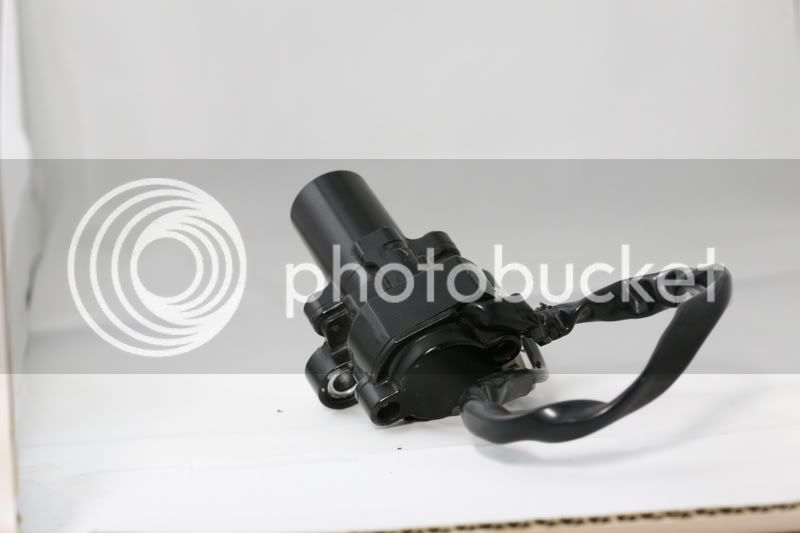
The above is a back view showing the wire bundle exiting the switch. Note, the wire tie used as a choke. I believe it is important to have some type of choke on this wire bundle.
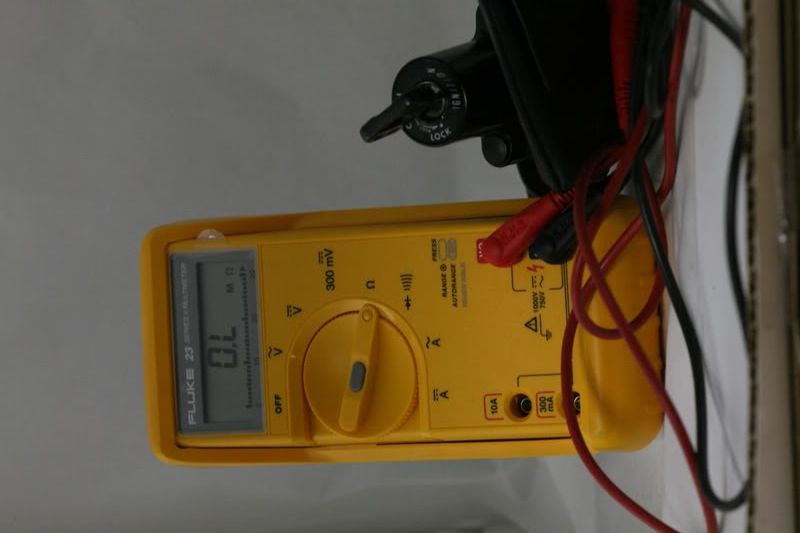
The small group of wire with ignition off showing "OL" or off level. This is proper functioning.
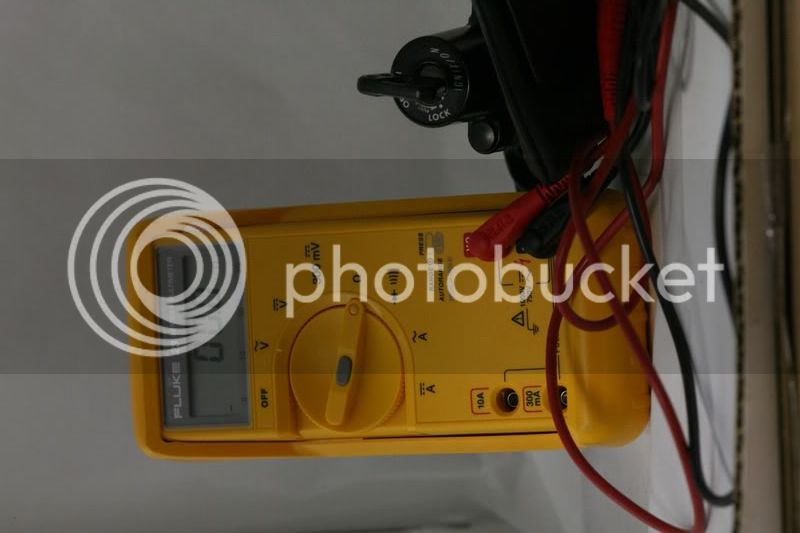
The above show proper functioning for the small wires with key on- Zero ohms.
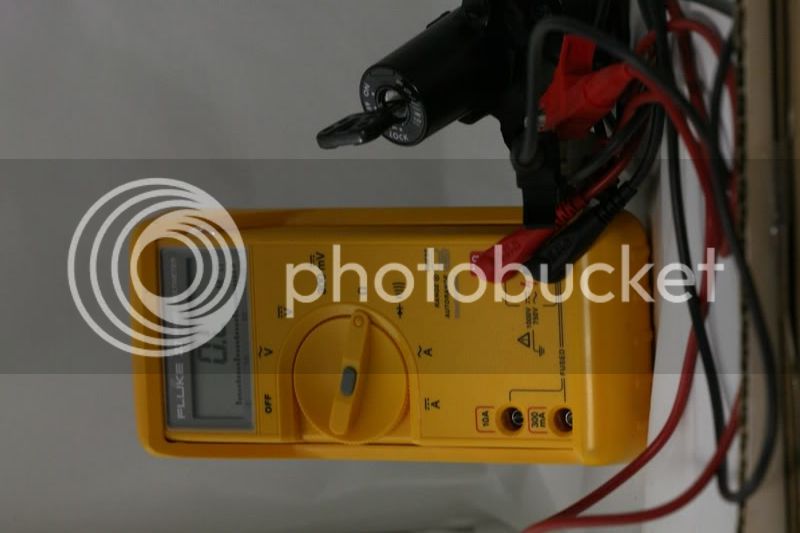
Key off and large group is OL. Okay so far.
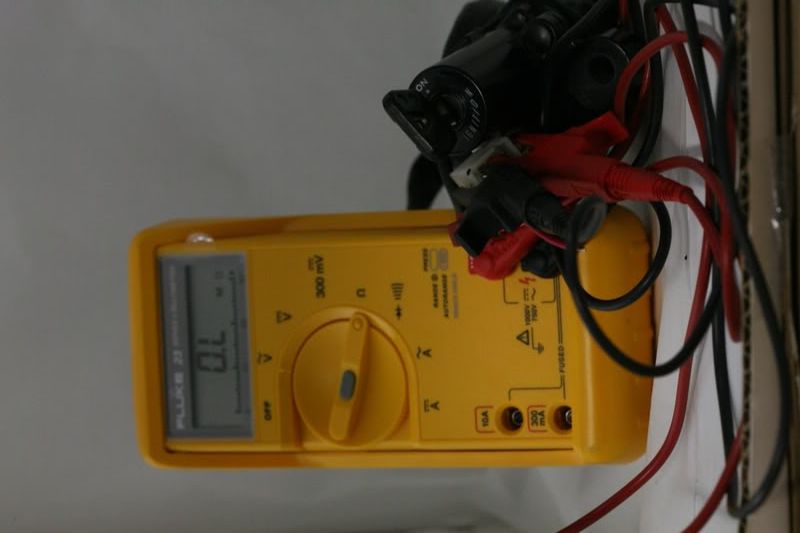
This above picture shows the electrical failure. Key is on and the large group is showing an open circuit.
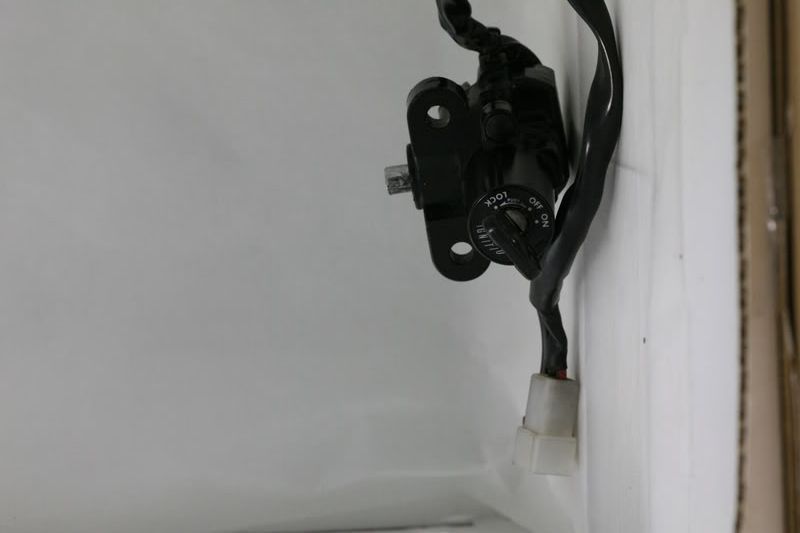
Well before I crack it open, is anyone interested how the steering lock is done? The small bolt on the top in the above photo slides out and locks the head. Cool. Back to the topic.

The bottom security screws have been drilled. The white part has various electrical contacts that slide along a PC board (on next photo). The white part is connected to a shaft which is the key tumbler part of the lock. Therefor, the upper part is a tumbler and the lower part is a switch.
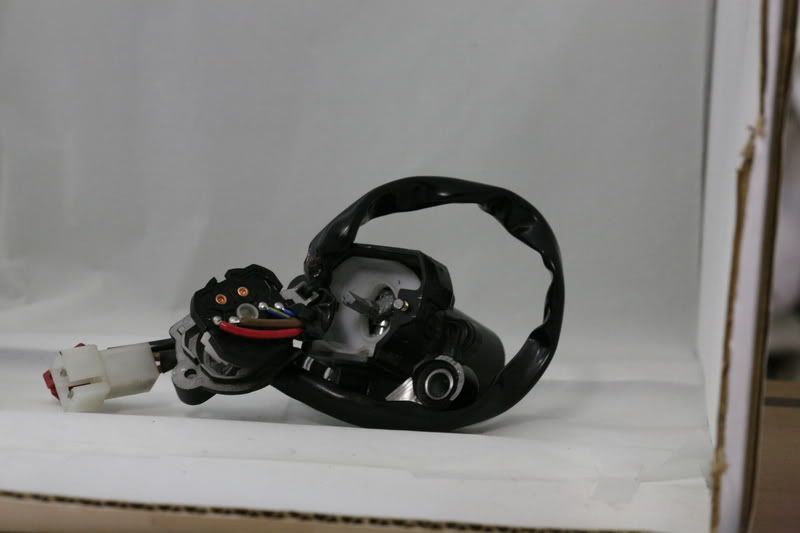
My wire DID NOT pull out of the PC board. I checked them visually and electronically. They were all OK.

Another view of the switch.
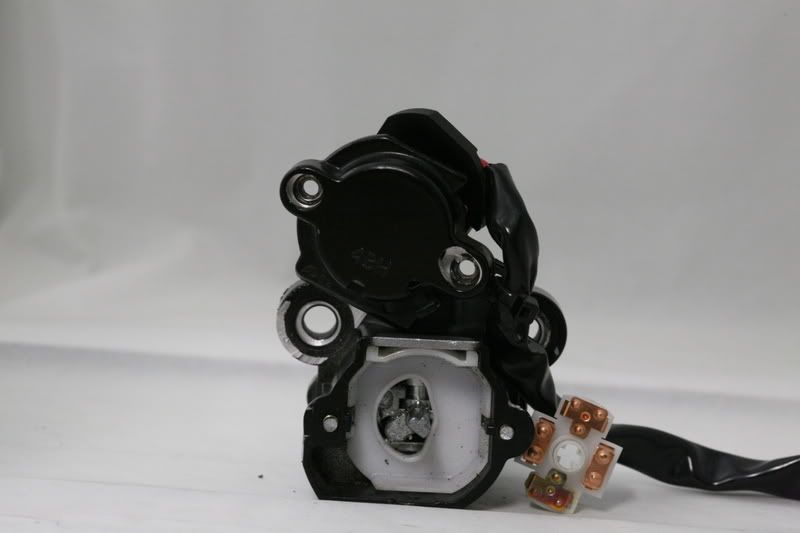
Well, some astute folks may wonder what happened to cause failure? Scooter will like this one. The area between the white part and the PC board shown in the picture labelled "Another view of the switch" was grimmy and dirty. I take full responsiblity for this switch failure. At about 8K miles, I washed my bike and mistakenly left the keys in the ignition. I was worried about my ignition rusting since some water must have run down the key and intruded the tumbler. I used about 5-6 drops of graphite lube (Dry graphite in a fine oil). This ran down the tumbler and coated the switch. Over time the switch picked up grime and failed.
My recommendation- if you are having ignition failure, first try to use contact cleaner into the bottom weep hole. You can see the weep hole in the last photo below the "43H". It is hard to see but it is there.

In the above photgraph, you see my ignition switch with my addition of two test leads. There are four wires exiting this switch. Two large wires with a white connector and two smaller wires with a red connector.

The above is a back view showing the wire bundle exiting the switch. Note, the wire tie used as a choke. I believe it is important to have some type of choke on this wire bundle.

The small group of wire with ignition off showing "OL" or off level. This is proper functioning.

The above show proper functioning for the small wires with key on- Zero ohms.

Key off and large group is OL. Okay so far.

This above picture shows the electrical failure. Key is on and the large group is showing an open circuit.

Well before I crack it open, is anyone interested how the steering lock is done? The small bolt on the top in the above photo slides out and locks the head. Cool. Back to the topic.

The bottom security screws have been drilled. The white part has various electrical contacts that slide along a PC board (on next photo). The white part is connected to a shaft which is the key tumbler part of the lock. Therefor, the upper part is a tumbler and the lower part is a switch.

My wire DID NOT pull out of the PC board. I checked them visually and electronically. They were all OK.

Another view of the switch.

Well, some astute folks may wonder what happened to cause failure? Scooter will like this one. The area between the white part and the PC board shown in the picture labelled "Another view of the switch" was grimmy and dirty. I take full responsiblity for this switch failure. At about 8K miles, I washed my bike and mistakenly left the keys in the ignition. I was worried about my ignition rusting since some water must have run down the key and intruded the tumbler. I used about 5-6 drops of graphite lube (Dry graphite in a fine oil). This ran down the tumbler and coated the switch. Over time the switch picked up grime and failed.
My recommendation- if you are having ignition failure, first try to use contact cleaner into the bottom weep hole. You can see the weep hole in the last photo below the "43H". It is hard to see but it is there.
Last edited by a moderator:




























![fjackets Real Lambskin Leather Biker Jacket — Quilted Cafe Racer Zip Up Moto Leather Jackets For Men | [1100085] Johnson Brown, XL](https://m.media-amazon.com/images/I/41I7Pm1f+vL._SL500_.jpg)














